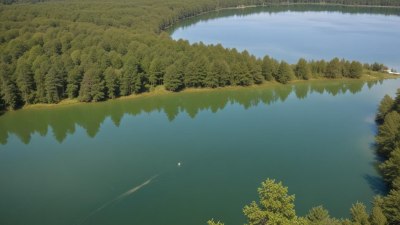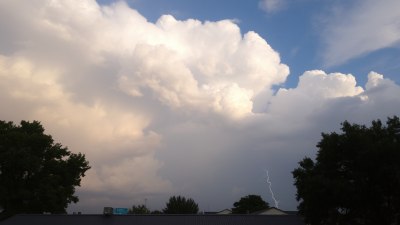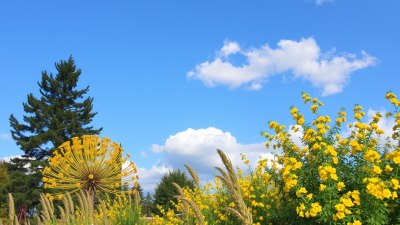The Science of Butterflies, or Just a Sudden Heatwave
Explore the science behind butterflies and their response to sudden heatwaves in this detailed article.

Butterflies are among the most enchanting creatures on our planet, captivating observers with their vibrant colors and delicate flight. Their beauty is not merely aesthetic; it is deeply intertwined with complex scientific principles. This article delves into the fascinating science of butterflies, examining their biology, ecology, behaviors, and how climate phenomena, such as sudden heatwaves, influence their lives.
Butterflies belong to the order Lepidoptera, which is Greek for 'scale wing.' This nomenclature aptly describes the microscopic scales that cover their wings, giving them their brilliant colors and patterns. The biology of these insects is extraordinarily intricate, intertwining genetics, physiology, and environmental interactions.
Life Cycle and Biology
The life cycle of a butterfly consists of four distinct stages: egg, larva (caterpillar), pupa (chrysalis), and adult. Each stage is crucial for the development of the butterfly and is marked by unique physiological changes known as metamorphosis. The transformation begins when a female butterfly lays eggs on host plants, chosen for their nutritional value for the hatching caterpillars.
Upon hatching, the caterpillar emerges and embarks on a voracious feeding spree, often consuming leaves and stems of specific plants. This stage is characterized by significant growth and several molts, as the caterpillar sheds its skin to accommodate its increasing size. During this period, the caterpillar is highly susceptible to predators and environmental changes.
From Caterpillar to Chrysalis
After reaching a certain size, the caterpillar undergoes a remarkable transformation into a chrysalis. This pupal stage is a period of dormancy and change, where the caterpillar's body is restructured into that of a butterfly. The process is not only a testament to the wonders of nature but also a critical phase requiring conditions that are conducive to the organism's survival.
Various factors, including temperature, humidity, and the presence of suitable microhabitats, impact the success of this transformation. Improper conditions can lead to failed metamorphosis, with catastrophic consequences for local butterfly populations.
Behavioral Adaptations
Butterflies exhibit intriguing behavioral adaptations that enhance their survival prospects. Among these is their thermoregulation strategy. As ectothermic (cold-blooded) creatures, butterflies rely on external heat sources to regulate their body temperature. On chilly mornings, butterflies can often be seen basking on sunlit rocks or leaves, absorbing warmth to become active. This behavior can be critical for energy acquisition, especially for species residing in temperate climates.
Additionally, butterflies have developed strategies for coping with environmental stresses. Their color patterns can help them camouflage with their surroundings, and they may engage in flight behaviors to evade predators. However, these adaptations can be severely challenged by sudden climate fluctuations, such as heatwaves.
Understanding Heatwaves and Their Impact
Heatwaves are defined as prolonged periods of excessively high temperatures, often accompanied by humidity. These phenomena can drastically alter habitats, affecting the delicate balance of ecosystems where butterflies live. Understanding the impact of heatwaves on butterfly populations is crucial for conservation efforts and for predicting biodiversity changes in the face of climate change.
During a heatwave, temperatures can soar beyond the physiological limits of many butterfly species. Elevated heat can lead to increased metabolic rates, meaning butterflies expend energy more rapidly, thus requiring more food resources. In the absence of adequate flora to support their feeding needs, populations may decline. Notably, certain butterflies may find refuge at higher elevations or in shaded areas during extreme heat.
Phenology: Changes in Life Cycles
Phenology refers to the study of cyclic and seasonal natural phenomena, particularly as they relate to climate and plant and animal life. For butterflies, the timing of life cycle events such as breeding and hatching is closely tied to environmental conditions, including temperature and seasonal changes. Heatwaves can disrupt these cycles, causing mismatches between butterfly emergence and the availability of food plant resources.
For instance, if temperatures rise earlier in the spring, butterflies that hatch prematurely may find that their host plants are not yet available. This phenomenon can lead to increased mortality rates and diminished reproductive success. Additionally, changes in timing can alter butterfly interactions with pollinators and other species within their ecosystem.
Conservation and Future Challenges
The conservation of butterflies is a pressing issue, especially given the increasing frequency of extreme weather events due to climate change. Butterfly habitats are shrinking due to urbanization, agriculture, and climate-driven habitat alterations. Conservation strategies must encompass safeguarding natural habitats and promoting biodiversity to enhance ecosystem resilience.
Efforts such as planting native vegetation, creating butterfly gardens, and maintaining wildflower corridors can provide necessary resources for butterflies during heatwaves and other climate stresses. In addition, public awareness and education play a crucial role in conservation efforts, encouraging community involvement in protecting these vital species.
Research and Innovations
Ongoing research into butterflies and their responses to climate change, particularly heatwaves, is essential. Scientists are employing various methods, including modeling, genetic studies, and observational field studies, to understand how specific species react to environmental changes. By identifying vulnerable populations, researchers can devise targeted conservation strategies.
Innovations in technology, such as remote sensing, can also help monitor butterfly habitats and track changes in their migratory patterns. Technologies used in ecology can facilitate the gathering of data, enabling scientists to predict population trends and assess ecosystem health more effectively.
The Butterfly Effect: A Larger Perspective
Understanding the biology and behavior of butterflies provides key insights into broader ecological dynamics. Butterflies serve as important indicators of ecosystem health because their presence and abundance reflect environmental changes. A decline in butterfly populations often signals disruptions within the food web, which can impact various species, including humans.
Furthermore, butterflies contribute to pollination, playing a vital role in the reproduction of many flowering plants. As these plants serve as food sources for numerous organisms, their decline due to climate change and heat stress can have cascading effects throughout the ecosystem.
A Call to Action
Butterflies are not merely beautiful insects; they are critical components of our ecosystems whose survival depends on the delicate balance of environmental factors. The impacts of sudden heatwaves and climate change pose significant threats to their populations. It is imperative to raise awareness about these challenges and the significance of butterflies in maintaining ecological integrity.
By adopting sustainable practices, supporting conservation initiatives, and advocating for climate action, individuals can contribute to the preservation of butterfly species and the broader ecological health of our planet. Every action counts in safeguarding these incredible creatures and ensuring that future generations can admire their beauty and the invaluable role they play in our world.











